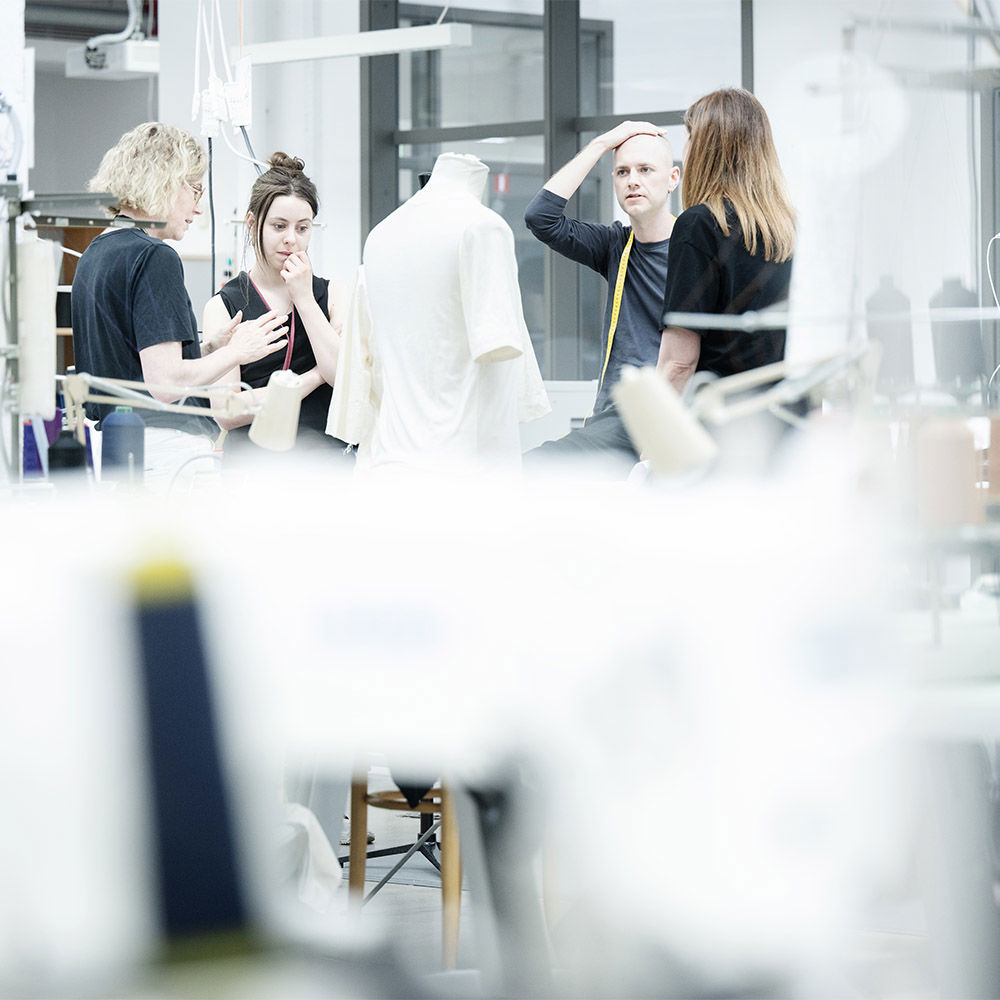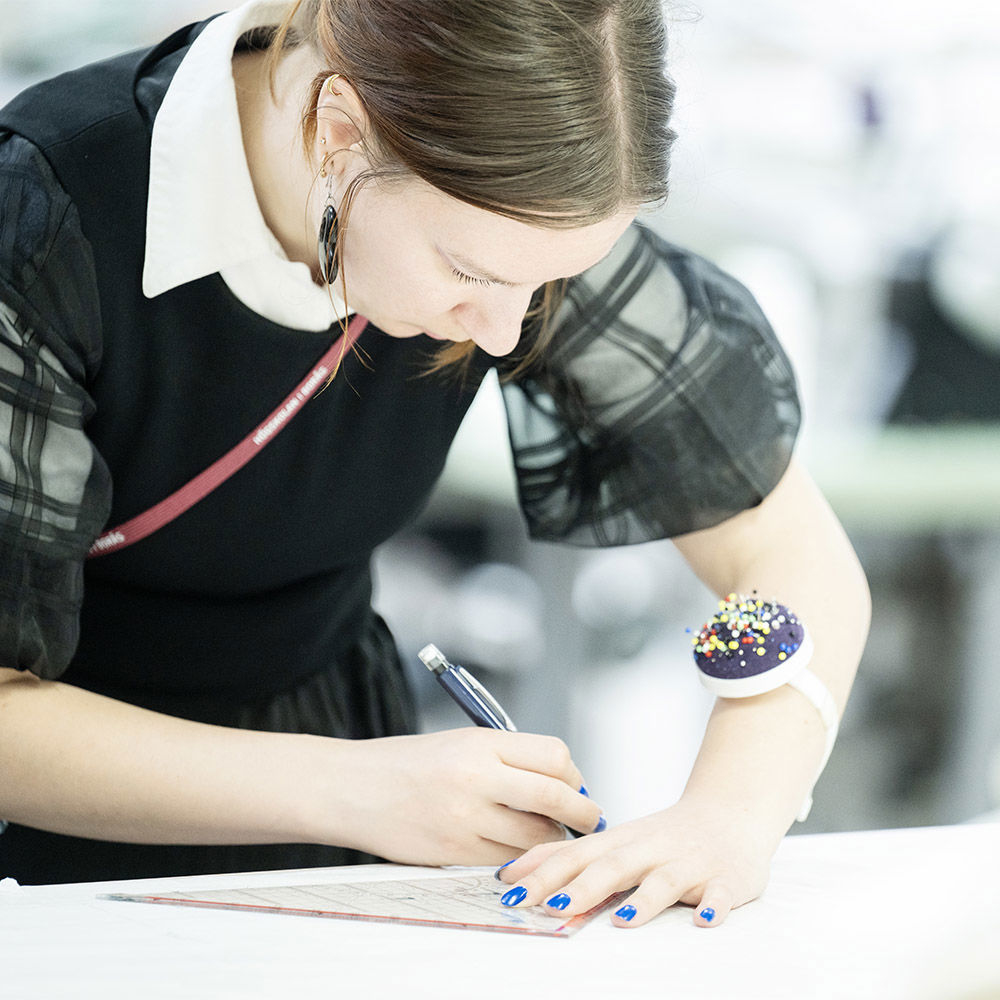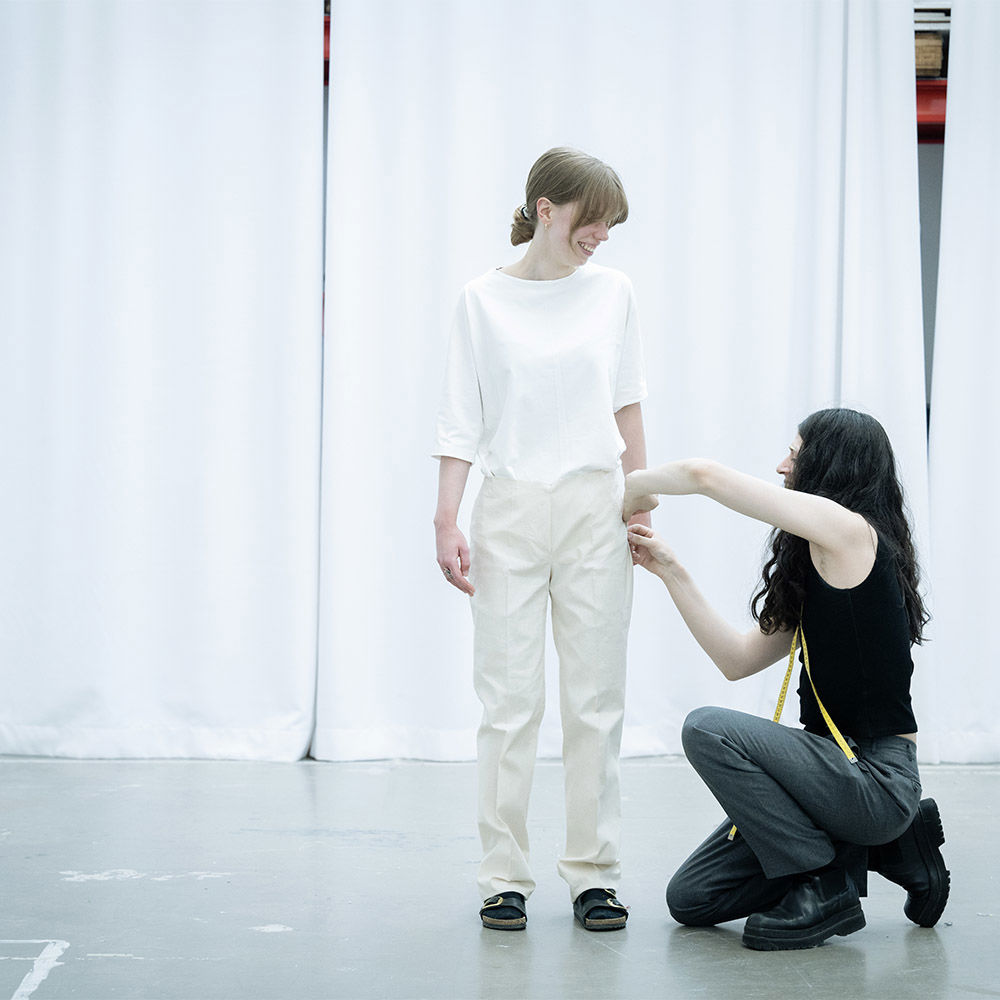Design students from the Swedish School of Textiles took sustainable fashion to the UN headquarters
“We are honoured and there was no question that we would accept. In the past, major fashion houses such as Benetton and Dior have designed and produced the guide uniforms. But the fact that we are a university and not a fashion brand also presented many major challenges, not least when it came to production,” said Susanne Nejderås, overall project manager and Textile Strategist at the University of Borås.
When she looks back at the project as a whole, she noted, “We went from idea to finished product delivered to the guides in New York City in just over a year. Normally, for a fashion company, this takes significantly longer and with a different lead time than so close to delivery. It has been challenging for everyone, but together we managed it, and now the guides in New York are wearing clothes from a collection that is innovative, elegant, functional, inclusive, and sustainable. And designed by our students! I think that's fantastic!”
Links to several sustainability goals
The collection can be linked to several of the global sustainability goals – for example, through its thoughtful material choices, local production and collaboration, and social sustainability aspects.
Some examples of sustainable solutions found in the collection include buttons made of Corozo, a natural material derived from the tagua nut that is an excellent alternative to synthetic materials. The scarves were printed using digital printing, minimising chemical and water consumption. The material for the dress was sourced from dead stock, meaning the fabric was produced but never used, making it a sustainable solution that gives new life to existing materials.
Production in collaboration with well-known companies
The collection consists of 12 products with between 40–80 garments each. The garments were made from high-quality natural materials such as wool, cotton, and silk in order to last for a long time and provide high levels of comfort. They were made in collaboration with local manufacturers known for their fine craftsmanship and European production, such as Eton, Cavaliere, Trikåby and ACG Accent.
“We have many people with extensive industrial experience within our organisation, which has been a prerequisite for this project. However, as a university, we have learned a great deal by collaborating with knowledgeable and professional companies. Since we do not have our own full-scale production, the students have had to adapt ideas for the collection to what is possible in the producers' factories while simultaneously challenging to achieve the vision. Very similar to how it works in the industry, and we are very pleased with the final result,” said Susanne Nejderås.
She highlighted one of the producers, Eton, whose long history started in 1928 when Annie Pettersson started sewing dresses at home in the family kitchen in Borås. “It feels very special that it is this company produced our dress,” she said.
But there have been challenges in creating a sustainable collection.
“When we, as a university, produce a garment, we face the same challenges that the industry does. For example, it was hard to find full-scale production in Sweden, which was our original vision, but we have managed to knit and dye two of the garments here at home and the rest is made in Europe. And we are happy with that,” she said.
Built-in features make garments customisable
Social sustainability has been an important aspect in the development of the collection. The garments are intended to be comfortable and stylish regardless of body type, so they have been designed with built-in features that adjust, for example, the waistband. They are also designed to facilitate tailoring the leg and sleeve lengths.
“These garments should last a long time – five to ten years,” she said.
However, the project has faced challenges, for example, regarding the gender-neutral garments that were initially planned.
“We've had to compromise and prioritise an elegant fit, which means differences between men's and women's garments. However, all the garments have a uniform look. We have thought about equality and so for example, all garments have the same functions and the same buttoning. And we have some completely gender-neutral garments – the skirt and scarves that look equally good on everyone.”
Modern sizing in the collection
Body measurements guide the collection’s sizing to avoid the complexity of the different sizing systems worldwide. The UN, as an international workplace with staff from different countries with different sizing systems, can benefit from this neutral way of communicating sizes.
“We have tried to be innovative in many aspects and the sizing communication is modern in this collection,” said Susanne Nejderås.
As she summarised it, “The fashion industry has a long way to go in its transition. With this project, the Swedish School of Textiles can pave the way for the future of textiles and fashion, and that is exciting.”


